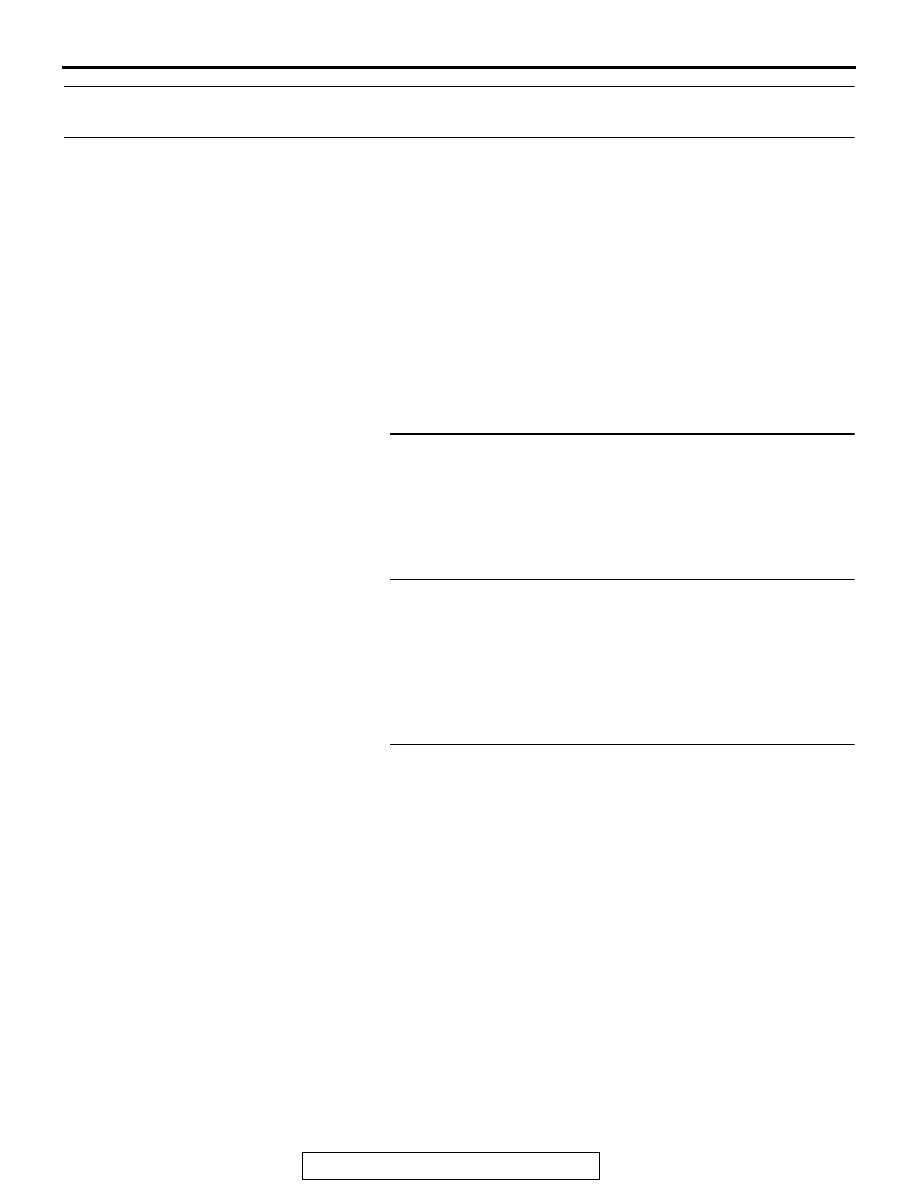Content .. 1079 1080 1081 1082 ..
Mitsubishi Outlander GS45X. Manual - part 1081

DOOR
TSB Revision
BODY
42A-127
INSPECTION PROCEDURE B-7: Window Glass Lowers Automatically while it is Rising <Driver’s Side
Only>.
.
CIRCUIT OPERATION
If the sliding resistance is too great when the window is being
raised or the window glass encounters an object, the window
glass will lower by approximately 150 mm (5.9 in).
.
TROUBLESHOOTING HINTS
• Improperly adjusted door window glass
• Incorrectly installed or warped glass slider
• Malfunction of the power window motor
• Malfunction of the window regulator
DIAGNOSIS
STEP 1. Check the power window anti-trap function.
Check that the power window anti-trap function works normally
(Refer to
Q: Is the check result normal?
YES : Go to Step 2.
NO : Refer to
.
STEP 2. Check that the door window glasses are installed
correctly.
Check that the door window glasses are installed correctly.
Q: Is the check result normal?
YES : Go to Step 3.
NO : Adjust the door window glass (Refer to
Verify that the power window works normally.
STEP 3. Retest the system.
Check that the power window does not lower while it is being
raised.
Q: Is the check result normal?
YES : No action is necessary and testing is complete.
NO : Replace the power window motor of the defective
window. Verify that the power window works normally.